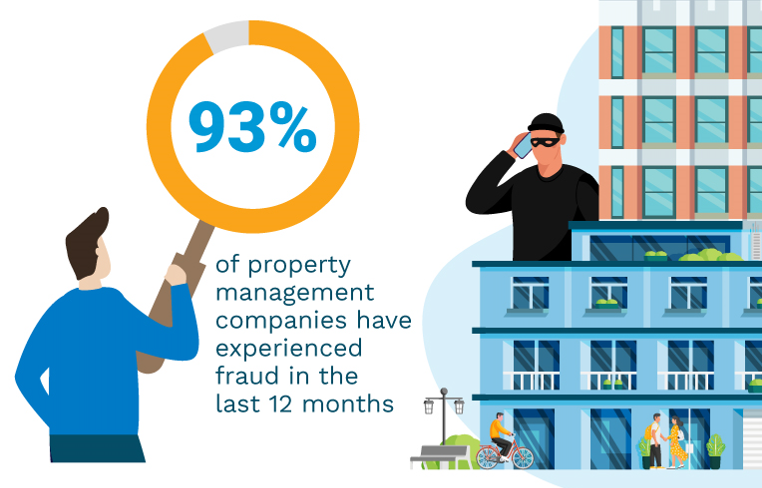How to value multifamily property
In the fast-paced world of real estate, knowing how to value a multifamily property is essential for landlords and property managers. Did you know that multifamily properties accounted for over 30% of all real estate investments in the past year? With the U.S. rental market booming and urban populations on the rise, understanding property valuation can make or break your investment strategy!
This guide will help you navigate the complex process of determining the true worth of your multifamily property, ensuring you maximize your returns and make informed financial decisions. From assessing market trends to calculating Net Operating Income, we’ll cover everything you need to know to accurately value your multifamily property and stay ahead in the competitive real estate market.
Understanding multifamily property valuation
Accurate valuation is a vital part of multifamily property management which impacts financing, purchasing, and managing your property. Value can be influenced by location, condition, rental income, and market trends. There are a few different methods on how to calculate the value of a multifamily property.
Why is accurate valuation important for multifamily properties?
Accurate valuations are crucial for securing financing. Lenders require precise property values to determine loan amounts and assess risks. Understanding your property’s worth helps you make informed decisions about buying or selling.
Accurate valuations also attract investors seeking profitable returns. This ensures your property remains a competitive and appealing investment. Accurate valuations also aid in setting appropriate rental rates.
What factors influence multifamily property values?
Several factors influence the value of multifamily properties. Location is one of the most important; properties in desirable areas command higher values. The condition of the property is equally important as well-maintained properties are more valuable than those requiring repairs.
Properties with higher rental incomes and stable occupancy rates tend to have increased values. Market trends and economic conditions also play a significant role. Understanding these factors helps in the accurate valuation of your properties.
Common valuation methods for multifamily properties
Understanding how to calculate the value of a multifamily property is essential for making informed investment decisions. While real estate valuation software can be very useful, there are a few traditional valuation methods that provide valuable insights. Here’s an overview of some of the top ones:
What is the Income Capitalization Approach?
The Income Capitalization Approach values a property based on its income potential. Start by calculating the Net Operating Income (NOI), which is the gross rental income minus operating expenses. Then, divide the NOI by the capitalization rate (cap rate) to determine the property’s value.
This method is especially effective for income-generating properties, providing a clear picture of their profitability. For example, if a multifamily property has an annual NOI of $100,000 and the market cap rate is 5%, the property value would be $2 million ($100,000 / 0.05). This approach is widely used due to its direct focus on income potential.
How does the Sales Comparison Approach work for multifamily properties?
The Sales Comparison Approach values a property by comparing it to similar properties recently sold in the same market. These comparable properties, or comps, are adjusted for differences in size, age, and condition. The adjusted prices of these comps provide an estimate of your property’s value, offering a market-based perspective.
For instance, if comparable properties in your area have sold for $200,000 per unit, and your property has 10 units, the estimated value would be $2 million. This method is straightforward and relies on recent sales data to provide an accurate valuation. It is particularly useful in active real estate markets where comparable sales data is readily available.
When is the Cost Approach used in multifamily valuation?
The Cost Approach is mainly used for unique or newly constructed properties. This method involves calculating the land value, adding the cost of improvements, and then subtracting any depreciation. The resulting figure reflects the property’s replacement cost. For instance, if the land value is $500,000, construction costs are $1.5 million, and depreciation is $200,000, the property value would be $1.8 million.
Calculating Net Operating Income (NOI)
Net Operating Income (NOI) is a critical metric in multifamily property valuation. It indicates the property’s profitability before accounting for financing and taxes. To calculate NOI, determine the Gross Potential Income (GPI) and subtract all operating expenses.
NOI helps assess the financial health and income potential of the property. It is a key factor in the Income Capitalization Approach. Accurate calculation of NOI is essential for a realistic property valuation.
How do you determine the Gross Potential Income?
Gross Potential Income (GPI) is the maximum rental income a property can generate if all units are leased at market rates. Include additional income sources such as parking fees or laundry rentals. It’s also important to consider potential rent increases, as future rental rates can significantly impact GPI.
For example, if your property has 20 units renting for $1,000 each, the GPI would be $240,000 annually (20 units x $1,000 x 12 months). Including other income sources and potential rent hikes can give a more comprehensive GPI. This helps in understanding the full income potential of the property.
What expenses should be included in NOI calculations?
Include all necessary operating expenses such as maintenance, utilities, and management fees. Insurance premiums and property taxes should also be accounted for. However, mortgage payments and capital expenditures should be excluded, as they are not considered operating expenses.
For instance, if your annual operating expenses total $60,000, and your GPI is $240,000, your NOI would be $180,000 ($240,000 – $60,000). Including all relevant expenses ensures an accurate NOI calculation. This provides a clear picture of the property’s profitability.
Using capitalization rates in multifamily valuation
Capitalization rates (cap rates) are essential in valuing multifamily properties, indicating the expected rate of return on an investment. Determining the appropriate cap rate varies based on market conditions and property specifics. This section will help you understand how to use cap rates effectively.
How do you determine the appropriate cap rate?
Research current market cap rates, which vary by location and property type. Consider property-specific factors such as age, condition, and income stability. Consulting real estate professionals can also provide valuable insights into selecting a realistic cap rate.
For example, cap rates in prime urban areas may be lower due to higher demand, whereas cap rates in less desirable areas may be higher. Understanding these nuances helps in accurately valuing your property. A realistic cap rate ensures a more precise property valuation.
What’s the relationship between cap rates and property value?
Cap rates and property value share an inverse relationship. This means that lower cap rates result in higher property values, reflecting lower risk and higher investment desirability. Conversely, higher cap rates indicate greater risk and lower valuations.
For example, a property with a cap rate of 4% will have a higher value compared to a property with a cap rate of 8%. Use cap rates to gauge investment potential and understand expected returns. This helps in making informed investment decisions.
Assessing property condition and location
Property condition and location are critical factors in property valuation. Well-maintained properties in prime locations command higher values. Regular maintenance helps preserve property value, while desirable locations attract higher rents and increased property values.
How does property condition impact valuation?
Well-maintained properties are generally valued higher because they are more attractive to potential buyers and tenants. Regular upkeep and timely repairs prevent value depreciation and maintain the property’s appeal. For example, properties with updated kitchens, modern bathrooms, and new flooring tend to fetch higher prices. Deferred maintenance, on the other hand, lowers property value and can deter potential buyers who anticipate higher repair costs.
For instance, a property with a leaking roof or outdated electrical systems will not only reduce its market value but also require a significant investment to bring it up to standard. Regularly updating and maintaining key aspects like plumbing, electrical, and HVAC systems can significantly boost property value and tenant satisfaction.
What location factors are most crucial in multifamily valuation?
Proximity to amenities such as shopping centers, dining options, and entertainment venues boosts property value. Properties near these conveniences are highly desirable, attracting tenants willing to pay higher rents. Access to quality schools is another crucial factor, as it attracts families, increasing demand and rental rates.
For example, a multifamily property located near top-rated schools and public transportation hubs will generally command higher rents and property values. Areas with low crime rates and good community services also enhance property attractiveness and value.
Evaluating rental income and occupancy rates
Rental income and occupancy rates directly influence your property’s profitability and value. Current rental income reflects market demand, indicating how much tenants are willing to pay. Occupancy rates measure your property’s ability to attract and retain tenants, providing insight into its desirability.
How do current and potential rental incomes affect valuation?
Current rental income shows the property’s earning power, directly impacting its value. Properties with high rental incomes are more valuable because they generate consistent revenue. Potential rental income considers market rates and the property’s capacity to increase rents, indicating value-add potential.
For example, if market trends show rising rents in your area, you can increase your property’s rental income by upgrading units or adding amenities. Regularly reviewing and adjusting rents to align with market trends maximizes income and enhances property value.
What role does the occupancy rate play in determining value?
High occupancy rates indicate strong demand and reduce financial risk, supporting higher property valuations. Properties with consistent rental income are more attractive to investors and lenders. Maintaining high occupancy levels ensures stable income and value.
For instance, properties with occupancy rates above 95% are generally seen as stable and low-risk investments. Effective property management strategies, such as responsive maintenance and tenant engagement programs, help maintain high occupancy and property value.
Considering future growth and market trends
Future growth and market trends significantly affect multifamily property values. They indicate potential appreciation and investment viability. Evaluating potential appreciation involves staying informed about market trends and economic factors to make strategic decisions.
How do you factor in potential appreciation?
Research area growth projections by examining factors like population growth and economic development. Assess planned infrastructure projects, as new roads, schools, and amenities can boost property values. Investing in emerging markets with strong growth prospects can offer significant appreciation potential. For example, properties in rapidly growing urban areas with planned infrastructure developments tend to appreciate faster.
What market trends should be considered in valuation?
Track rental market trends to understand high demand and rental growth, which indicate a strong market. Economic indicators like employment rates and economic stability impact rental demand and property values. Regulatory changes, such as zoning laws and rent control policies, also affect property operations and value.
For instance, changes in zoning laws that allow for higher density can increase a property’s value by enabling the development of more units. Conversely, rent control policies might limit the ability to raise rents, potentially affecting property income and value. Staying updated on these trends helps adjust investment strategies accordingly.
Valuation challenges in multifamily properties
Valuing multifamily properties can be challenging. Problems like deferred maintenance and mixed-use properties add challenges. Deferred maintenance impacts valuation, and significant repairs lower property value and appeal. Knowing how to value a multifamily property can keep you ahead of these challenges.
How do you value properties with significant deferred maintenance?
Inspect the property thoroughly, identifying maintenance issues and estimating repair costs. Subtract repair costs from the property’s value. Plan for improvements by budgeting for repairs and upgrades to restore value.
For instance, a property needing $50,000 in repairs should have these costs deducted from its value. Addressing deferred maintenance promptly can prevent value depreciation. This ensures the property remains competitive and attractive.
What challenges arise when valuing mixed-use multifamily properties?
Mixed-use properties have diverse income sources, requiring assessment of both residential and commercial tenants. Consider different market factors, as residential and commercial markets have distinct trends and demands. Managing mixed-use properties requires specialized skills and strategies.
Multifamily software used by the top ten NMHC managers
Take full control of the lead-to-lease process
Get a demo
Can fraud happen to your multifamily business?
Learn more about how to protect your property and your community with MRI Risk Management.

